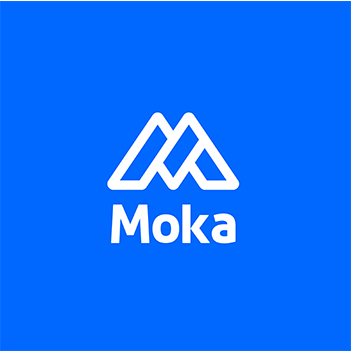9 Proven Tips to Recruit and Retain Peer-to-Peer Participants

Recruiting participants is the backbone of any successful peer-to-peer recruiting initiative. But getting people involved is only half the battle. Keeping them engaged over time is just as important. Participant retention ensures your efforts don’t go to waste and builds a stronger, more connected community. So, how do you create a great participant experience that keeps them coming back? It starts with understanding their needs and offering the right support. With the right tips, you can make every participant feel valued and motivated to stay involved.
Key Takeaways
Describe the perfect participant to focus your recruitment efforts better.
Learn why participants join and remove obstacles to make it easier.
Make signing up simple with clear steps to keep them interested.
Praise participants for their success to make them feel valued.
Use rewards like prizes or praise to keep them excited to stay.
Understand the Basics of Peer-to-Peer Recruiting
Define Your Ideal Participant Profiles
Before you start recruiting participants, you need to know who you're looking for. Defining your ideal participant profiles helps you focus your efforts and tailor your outreach effectively. Think about the qualities that make someone a good fit for your initiative. Are they passionate about your cause? Do they have a strong network they can tap into?
Peer-to-peer recruiting works best when you understand the type of people who will thrive in your program. For example, peer-to-peer interviews are a great way to assess not just technical skills but also how well someone fits into your team or community. This approach ensures you're bringing in participants who align with your goals and values.
Involving your team in the recruiting process can also boost engagement and create a sense of ownership.
When you know your ideal participant, you can create messaging that resonates with them. This makes your outreach more personal and effective.
Identify Motivations and Address Barriers
Why would someone want to join your initiative? Understanding motivations is key to recruiting participants who are excited to get involved. Some people might be driven by a desire to make a difference, while others might be looking for personal growth or networking opportunities. Once you identify these motivations, you can highlight them in your messaging.
At the same time, think about what might hold people back. Are they worried about time commitments? Do they feel unprepared? Addressing these barriers upfront can make a big difference. For instance, offering clear instructions or providing easy-to-use tools can help participants feel more confident about joining.
A study found that 71% of companies offering constructive feedback during the recruiting process saw better engagement. Similarly, when you provide support and guidance, you make participation feel more accessible and rewarding.
By focusing on both motivations and barriers, you create a smoother path for people to say "yes" to your initiative.
Incorporate Peer-to-Peer Fundraising Strategies
Provide Participants with a Compelling Story to Share
A great story can inspire action. When you tell a story that resonates, it helps participants connect emotionally with your cause. Start by introducing a relatable main character and their challenge. Show how your initiative made a difference in their life. This creates an impactful story that participants can share with their networks.
For example, focus on the audience’s interests and make them feel like heroes in the story. Use cliffhangers to build suspense and keep them engaged. Adding visuals, like photos or videos, can make the story even more compelling. These elements not only grab attention but also make your fundraising campaign memorable.
Impact stories are powerful tools for peer-to-peer fundraising. They give participants a reason to care and motivate them to spread the word. When participants feel connected to the story, they’re more likely to help fundraisers raise more for your cause.
Equip Participants with Easy-to-Use Fundraising Tools
The right tools can make or break your fundraising efforts. Equip participants with platforms that simplify the process and boost their confidence. Donation platforms like GoFundMe and Fundraise Up make online fundraising easy and accessible. They offer features like optimized donation pages and AI technology to enhance efficiency.
Event management software, such as DoJiggy, can streamline ticketing and registrations for events like walk-a-thons or bowl-a-thons. These tools also allow participants to track their progress and share updates with their networks. For peer-to-peer fundraising, 99Pledges stands out with its built-in tracking and support features.
Set clear goals for your participants and break tasks into manageable steps. A timeline with deadlines can help them stay on track. Delegating roles within your team can also ensure smoother operations. By incorporating peer-to-peer fundraising tools and strategies, you empower participants to achieve fundraising success.
Simplify the Registration and Onboarding Process
Streamline Registration with Clear Instructions
A smooth registration process sets the tone for a positive participant experience. When signing up feels easy, people are more likely to follow through and stay engaged. So, how can you make registration seamless? Start by choosing the right platform for your event. Look for one that’s user-friendly, secure, and fits your needs. Platforms like Eventbrite or Cvent often work well for peer-to-peer initiatives.
Next, design an attractive event website. Use visuals and clear calls to action to grab attention. Make sure the site explains your event’s purpose and benefits. A simple, intuitive registration form is also key. Stick to essential fields and use clear labels. If possible, add progress indicators to show how far along someone is in the process.
Finally, think about the check-in experience. Fast methods like mobile apps or self-service kiosks can save time and reduce frustration. After the event, collect feedback to see what worked and what didn’t. These steps not only improve the registration process but also set the stage for successful fundraising efforts.
Offer Personalized Support to New Participants
Starting something new can feel overwhelming. That’s why offering personalized support to new participants makes such a big difference. When people feel supported, they’re more likely to stay involved and contribute to your cause.
Begin by welcoming each participant with a friendly email or call. Use this opportunity to share helpful resources, like a quick-start guide or FAQs. If your initiative involves fundraising, provide tips on how to get started. For example, you could suggest setting small, achievable goals or sharing their campaign on social media.
Pairing new participants with experienced ones can also help. A mentor can answer questions, offer encouragement, and share their own success stories. This creates a sense of community and helps new participants feel more connected.
Remember, personalized support isn’t just about answering questions. It’s about showing participants that you value their time and effort. When they feel appreciated, they’re more likely to stay engaged and help your initiative thrive.
Leverage Social Media for Peer-to-Peer Recruiting

Share Participant Success Stories
Social media thrives on stories that inspire and connect. Sharing participant success stories is one of the most effective ways to engage supporters and motivate others to join your cause. When you highlight real-life achievements, you show the tangible impact of your initiative. This builds trust and encourages others to take action.
For example, consider these success stories:
In Sammamish, WA, a transportation engagement site attracted 22,000 visitors and 3,000 informed participants, creating meaningful conversations about local projects.
Coventry City Council saw a fivefold increase in response rates compared to previous efforts, bringing more voices into the conversation.
Wollongong City Council collected 426 online submissions with ideas for achieving net zero emissions by 2050.
"I think what works well is having one source for updates," said Rori Kirkpatrick, Community Transportation Coordinator at the City of Sammamish.
These examples demonstrate how sharing stories can amplify your message and foster deeper engagement. When you celebrate participants’ accomplishments, you make them feel valued while inspiring others to contribute to your fundraising goals.
Use Interactive Content to Engage Your Audience
Interactive content is a game-changer for social media engagement. It grabs attention, encourages participation, and keeps your audience coming back for more. You can use a variety of formats to engage supporters and spark conversations.
Here are some ideas:
Contests and giveaways
Polls and surveys
Tag-a-friend posts
Fundraising campaigns
Quizzes and user-generated content
Quizzes, for instance, are incredibly effective. BuzzFeed reports that 96% of users complete sponsored quizzes, proving their potential to captivate audiences. You can also try 360° videos, branded hashtags, or even filters and flair to make your content stand out.
Interactive content doesn’t just entertain—it builds a sense of community. When supporters feel involved, they’re more likely to share your posts and help spread the word. This creates a ripple effect, boosting your fundraising efforts and expanding your reach.
Foster a Strong Sense of Community

Create Opportunities for Peer Interaction and Networking
Building a strong sense of community starts with creating spaces where participants can connect and share experiences. When people feel part of a group, their engagement grows, and they’re more likely to stick around. So, how can you make this happen? Start by organizing events that encourage interaction. Virtual meetups, in-person gatherings, or even casual coffee chats can help participants bond over shared goals.
You can also set up online forums or social media groups. These platforms give participants a place to ask questions, share their fundraising journey, and celebrate milestones together. For example, a private Facebook group or a Slack channel can foster ongoing conversations. When participants see others succeeding, it inspires them to push forward with their own efforts.
Another idea is to host workshops or training sessions. These events not only provide valuable skills but also create opportunities for networking. Participants can exchange tips, share their story, and build relationships that last beyond your initiative. The stronger the connections, the more invested they’ll feel in your cause.
Recognize and Celebrate Participant Achievements
Everyone loves to feel appreciated. Recognizing and celebrating participant achievements is one of the best ways to boost morale and keep people motivated. Start by acknowledging successes publicly. Share their accomplishments in newsletters, social media posts, or during team meetings. A simple shoutout can go a long way in making someone feel valued.
Don’t wait for big milestones to celebrate. Small wins deserve recognition too. A quick thank-you email or a team huddle to applaud someone’s effort can make a huge difference. You could even create a culture of appreciation where participants recognize each other’s personal and fundraising achievements. This builds a positive environment that encourages continued success.
Consider adding a fun twist to your celebrations. Host an awards ceremony or create badges for specific accomplishments, like “Top Fundraiser” or “Most Inspiring Story.” These gestures not only highlight success but also motivate others to aim higher. When participants feel seen and celebrated, they’re more likely to stay engaged and contribute to your initiative’s success.
Offer Incentives to Boost Participant Retention
Implement a Reward System for Milestones
A reward system can work wonders when it comes to keeping participants engaged. People love being recognized for their efforts, and rewards give them something exciting to work toward. You can set up milestones that align with your goals, like reaching a specific fundraising target or completing a certain number of tasks. Each milestone can unlock a reward, motivating participants to stay active and involved.
For example, you might offer small rewards like gift cards or exclusive merchandise for hitting initial goals. Larger milestones could come with bigger perks, such as event tickets or public recognition. A Cochrane systematic review found that monetary incentives were particularly effective, increasing retention rates by 18%. While monetary rewards are impactful, don’t overlook the value of creative, non-monetary options.
Take inspiration from organizations that have successfully implemented reward systems:
Organization | Reward System Description | Results |
|---|---|---|
White Castle | Sales incentive program to motivate and reward its sales team. | Sales increased by 89% within 90 days, with 75% program participation and 100% quality scores. |
University Hospitals | Enterprise-wide recognition program to foster appreciation. | Recognition program participation increased by 25% via desktop and 146% via mobile. |
ATCC | Recognition program to combat high turnover rates. | Improved retention by 10% within one year. |
These examples show how a well-designed reward system can boost participation and retention while fostering a sense of achievement.
Provide Both Tangible and Intangible Rewards
When you offer incentives, it’s important to strike a balance between tangible and intangible rewards. Tangible rewards, like cash bonuses or branded merchandise, provide immediate gratification. They’re great for incentivizing participation in fundraising campaigns or achieving specific goals. However, intangible rewards can be just as powerful. Think about offering experiences, recognition, or opportunities for personal growth.
For instance, you could highlight top performers on your social media channels or feature them in newsletters. Public recognition not only boosts morale but also inspires others to step up. You might also offer exclusive learning opportunities, like workshops or mentorship programs, to help participants grow their skills. These rewards create a deeper connection to your cause and encourage long-term engagement.
Remember, the key is to tailor your incentives to what your participants value most. Some may prefer tangible rewards, while others might find intangible ones more meaningful. By offering a mix, you ensure everyone feels appreciated and motivated to stay involved.
Tip: Regularly ask for feedback to understand what types of rewards resonate most with your participants. This helps you refine your approach and keep your community engaged.
Communicate Effectively and Consistently
Share Regular Updates and Milestones
Keeping participants informed is one of the easiest ways to maintain their interest and engagement. Regular updates show that progress is happening and that their involvement matters. But what kind of updates should you share? Focus on milestones that excite and inspire.
Here are some ideas:
Product Launches: Share details about new products or services to keep your audience curious and engaged.
Achievements in Sales: Highlighting sales milestones shows success and motivates participants to stay involved.
Industry Recognition: Awards or endorsements build credibility and make participants feel proud to be part of your initiative.
Community Engagement Initiatives: Sharing stories about how your group is making a difference fosters a sense of purpose.
When you share these updates, use visuals like photos or videos to make them more engaging. A quick email, a social media post, or even a short video can go a long way in keeping everyone in the loop. Regular communication builds excitement and keeps your participants connected to your mission.
Act on Participant Feedback to Build Trust
Listening to feedback is important, but acting on it is what really builds trust. When participants see that their opinions lead to real changes, they feel valued and more connected to your initiative. This sense of belonging encourages them to stay engaged.
Here’s how acting on feedback can make a difference:
It shows you’re committed to their satisfaction, which fosters loyalty.
Closing the feedback loop by sharing outcomes makes participants feel invested in the community.
A responsive approach that adapts to their needs enhances retention and overall satisfaction.
For example, if participants suggest simplifying a process, implement their idea and let them know about the change. A quick update like, “Thanks to your feedback, we’ve made registration even easier!” can make a big impact. This not only strengthens trust but also encourages more people to share their thoughts in the future.
By consistently acting on feedback, you create a community that evolves with its members. This keeps everyone engaged and ensures your initiative continues to grow.
Provide Opportunities for Growth and Leadership
Encourage Participants to Take on Leadership Roles
Giving participants leadership roles can transform their experience and deepen their commitment. When you empower someone to lead, you show them that their contributions matter. Leadership roles also help participants develop new skills and build confidence. So, how can you create these opportunities?
Start by identifying areas where participants can take charge. For example, you could ask them to lead a fundraising team, organize an event, or mentor new members. These roles allow them to take ownership and make a real impact. Many organizations have seen success with this approach. A multinational tech company, for instance, created peer groups led by senior executives to help mid-level managers grow as leaders. Similarly, a financial services firm had its CEO lead a peer group for high-potential employees, accelerating their leadership development.
You don’t need to limit leadership roles to formal positions. Even small responsibilities, like managing a social media campaign or coordinating a volunteer project, can make a big difference. When participants feel trusted, they’re more likely to stay engaged and motivated.
Tip: Provide outstanding coaching to help participants succeed in their leadership roles. A little guidance can go a long way in building their confidence.
Offer Skill Development and Learning Opportunities
People love to grow and learn. Offering skill development opportunities keeps participants excited and engaged. It also shows that you care about their personal and professional growth. So, what kinds of opportunities can you provide?
Workshops and training sessions are a great place to start. You could host sessions on public speaking, project management, or even social media strategies. These skills not only benefit your initiative but also help participants in their own lives. For example, a healthcare organization created peer groups for department heads to improve collaboration and patient care. This approach not only enhanced their skills but also strengthened their commitment to the organization.
Another idea is to offer one-on-one coaching. Personalized guidance helps participants tackle challenges and achieve their goals. Whether it’s learning how to lead a team or mastering a new tool, coaching can make a huge difference. When you invest in their growth, participants feel valued and are more likely to stick around.
Remember: Growth opportunities don’t have to be formal. Even casual feedback or a quick tip can inspire someone to improve and stay engaged.
Measure and Optimize Your Recruitment and Retention Efforts
Track Key Metrics to Evaluate Success
Tracking the right metrics helps you understand what’s working and where you can improve. Without data, it’s hard to know if your peer-to-peer recruiting efforts are paying off. So, what should you measure? Start with these key metrics:
Time to Fill: How long does it take to recruit new participants? A shorter time means your process is efficient.
Quality of Hire: Are your participants meeting expectations? This shows how well your recruiting strategies align with your goals.
Cost per Hire: How much are you spending to bring someone on board? Lower costs without sacrificing quality indicate smart resource use.
Candidate Experience: What do participants think about your recruiting process? A positive experience boosts your reputation and future participation.
Offer Acceptance Rate: Are people accepting your invitations? If not, you might need to adjust your messaging or incentives.
New Hire Turnover Rate: Are participants leaving early? High turnover could mean mismatched expectations or a lack of engagement.
By monitoring these metrics, you can pinpoint areas to refine and ensure your peer-to-peer recruiting efforts lead to fundraising success.
Continuously Improve Strategies Based on Data Insights
Data isn’t just for tracking—it’s a tool for growth. When you analyze your metrics, you uncover patterns that can guide your next steps. For example, if you notice participants leaving early, you might need to improve onboarding or offer more support.
Take inspiration from businesses that have used data to optimize their strategies. A fashion retailer bundled gloves with coats after noticing customers rarely bought gloves alone. This simple change reduced excess inventory and boosted sales. Similarly, a tech company found that users who engaged with advanced features were more likely to renew subscriptions. They responded by creating targeted training, which improved user engagement.
You can apply the same approach to peer-to-peer fundraising. If you see that participants struggle with certain tools, provide tutorials or simplify the process. If social media posts drive more sign-ups, focus your efforts there. Small adjustments based on data can lead to big improvements in participation and fundraising.
Remember, optimization is an ongoing process. Regularly review your metrics, test new ideas, and adapt to what works best. This keeps your peer-to-peer recruiting and fundraising strategies fresh and effective.
You now have nine actionable tips to recruit and retain participants effectively. Each tip is designed to help you build a stronger, more engaged community. Whether it’s simplifying onboarding, celebrating achievements, or offering growth opportunities, these strategies can make a real difference. Start small—pick one or two tips and see how they work for your initiative. Don’t forget to share your experiences and learn from others. Together, you can create a thriving peer-to-peer program that keeps participants coming back for more.
FAQ
What is peer-to-peer recruiting, and why is it important?
Peer-to-peer recruiting involves participants inviting others to join your initiative. It’s important because it leverages personal connections, making recruitment more authentic and effective. Plus, it builds a sense of community from the start. Think of it as teamwork in action! 🤝
How can I keep participants motivated over time?
You can keep participants motivated by recognizing their efforts, offering rewards, and creating opportunities for growth. Celebrate small wins, share updates, and provide consistent support. When participants feel valued and connected, they’ll stay engaged longer.
What tools should I use for peer-to-peer fundraising?
Use tools that simplify the process for participants. Platforms like GoFundMe or 99Pledges make fundraising easy. Event management tools like DoJiggy help with registrations. Choose tools that are user-friendly and offer features like progress tracking and sharing options.
How do I address participants’ concerns about time commitment?
Be upfront about the time required and offer flexible options. Provide clear instructions and break tasks into smaller steps. Pairing new participants with mentors can also help them manage their time better and feel more confident.
How do I measure the success of my recruitment efforts?
Track metrics like participant retention, time to fill, and cost per hire. Monitor feedback and engagement levels. Use this data to refine your strategies and ensure your efforts lead to better results. 📊
Tip: Regularly review your metrics to spot trends and make improvements.
See Also
Maximize Recruitment Success with Regional Applicant Tracking Insights
Unlocking Recruitment Opportunities with MokaHR Automation Tools
Boosting Recruitment Tactics Through MokaHR's Portal Solutions
Improving Recruitment Productivity with MokaHR's Online Tools
Elevating Recruitment Effectiveness Using MokaHR's Innovative Solutions
From recruiting candidates to onboarding new team members, MokaHR gives your company everything you need to be great at hiring.
Subscribe for more information

